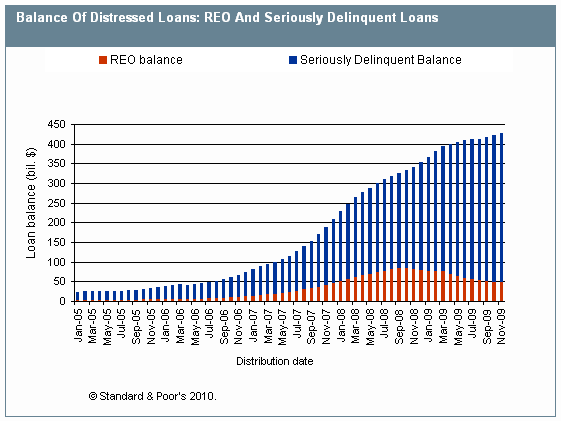There is a substantial research piece out by S&P looking at distressed mortgages (better late than never).
You can read the entire piece, but I’ll save you some time and give you the conclusion:
We believe that the recent constriction in the supply of foreclosed homes on the market is a temporary one. Loan modifications and the observed extension of time distressed loans remained as such may simply have delayed the inevitable, creating the demonstrated shadow inventory of troubled loans. Ultimately, the majority of the properties these distressed loans represent will likely have to be liquidated.
Our estimate of $473.4 billion in loans that will eventually need to be liquidated corresponds to approximately 1.75 million individual properties. This number represents almost 50% of the existing homes available for sale as of December 2009
Moreover [this] only accounts for expected defaults for mortgages outstanding in the private securitization market (which makes up less than a third of the total securitization market and less than 5% of the total mortgage market).
While we do not expect all of these distressed properties to liquidate at the same time, the significant percentage of the current supply that these distressed loans represent does reveal the potential future increase in housing supply. An influx of liquidated properties is likely to prompt a decline in prices if unaccompanied by a comparable increase in demand
As discussed earlier today, there are many more foreclosures coming . . .
>
Source:
The Shadow Inventory Of Troubled Mortgages Could Undo U.S. Housing Price Gains
Diane Westerback, Brian Grow, Mike P Dougherty
http://www.standardandpoors.com/ratings/articles/en/us/?assetID=1245206147429
Shadow Inventory – housing overhang article
http://www.ritholtz.com/blog/wp-content/uploads/2010/02/Shadow-Inventory-housing-overhang-article.pdf




What's been said:
Discussions found on the web: